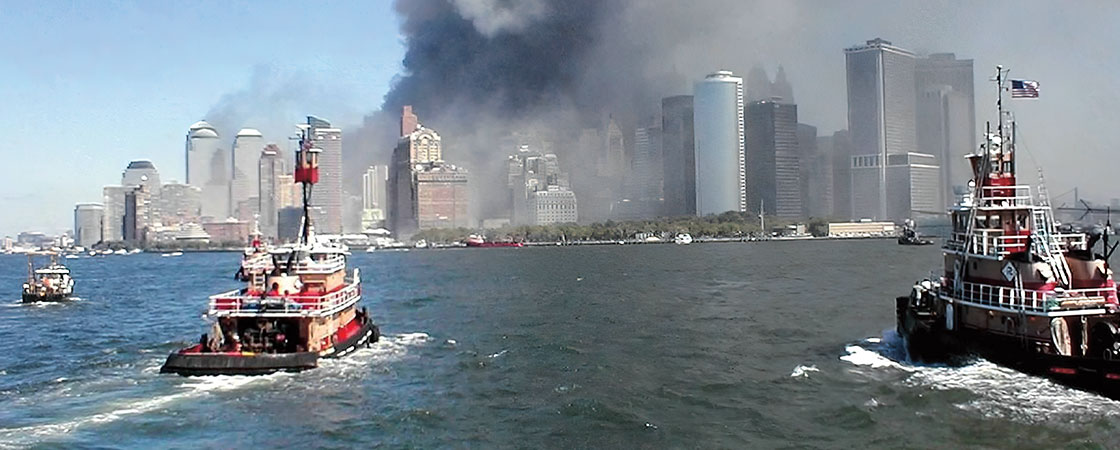Eleven-year-old Thomas Panevino couldn’t believe his eyes. He stared in shock at the New York City skyline, where only a few hours earlier, the city’s two tallest buildings—the Twin Towers—had stretched toward the sky. In their place now was a massive dark cloud, like a monster looming over the city.
It was September 11, 2001. Two planes had been deliberately crashed into the towers, causing them to collapse. Thomas and his dad were on a small police boat heading across the Hudson River toward New Jersey. All around them, dozens of other boats were also carrying frightened people away from the scene of the attacks in lower Manhattan.
Thomas clutched a cage holding Eddie, the family’s miniature poodle. Suddenly, he heard someone cry out, “The boat is sinking!” Thomas saw the back of the boat dipping under the surface of the water. Passengers squeezed toward the front of the boat as the engine began to cough and spit.
They were only about halfway across the river. Thomas gripped Eddie’s cage and fixed his eyes on the dock ahead.
Would they make it?
Eleven-year-old Thomas Panevino couldn’t believe his eyes. He stared in shock at the New York City skyline. Only a few hours earlier, the city’s two tallest buildings—the Twin Towers—had stretched toward the sky. In their place now was a huge dark cloud, like a monster looming over the city.
It was September 11, 2001. Two planes had crashed into the towers on purpose, causing them to collapse. Thomas and his dad were on a small police boat heading across the Hudson River toward New Jersey. All around them, dozens of other boats were also carrying frightened people away from the scene of the attacks in lower Manhattan.
Thomas clutched a cage holding Eddie, the family’s miniature poodle. Suddenly, he heard someone cry out, “The boat is sinking!” Thomas saw the back of the boat dipping under the surface of the water. Passengers squeezed toward the front of the boat as the engine began to cough and spit.
They were only about halfway across the river. Thomas gripped Eddie’s cage and fixed his eyes on the dock ahead.
Would they make it?

